Cookery Feature - Christmas Books for Cooks
What cook or would-be-cook doesn’t love a food book for Christmas? And luckily there’s no shortage of seriously interesting Irish published books to choose from, with a bumper crop this year including everything from food culture and history, to how to ‘elevate the everyday’. Just a few to think about here for starters but, if time allows, there’s nothing to beat a good browse in your local bookshop. You’re sure to come away with more than you meant to, but that’s okay…
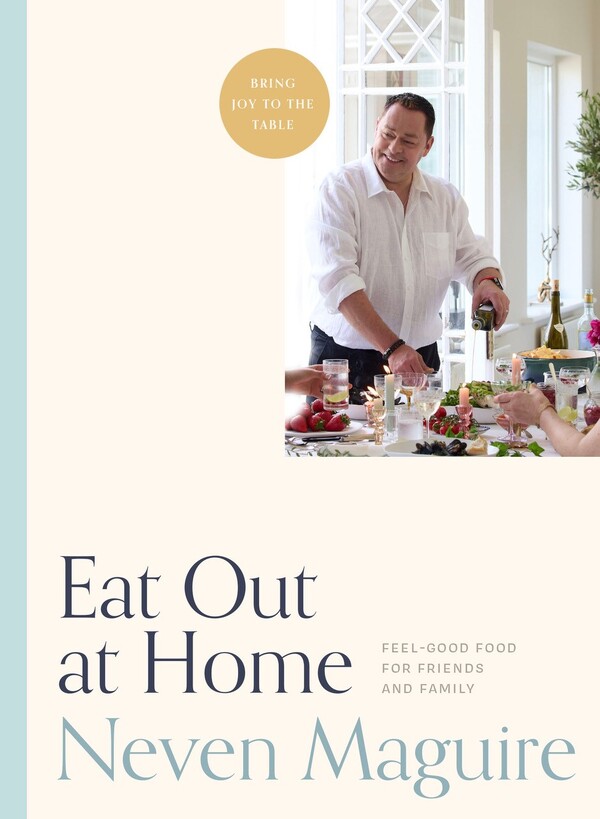 Neven Maguire must have lost count of the number of books he has to his name at this stage, but every one’s a gem and there’s no knowing how many people have him to thank for feeling confident in the kitchen. His latest, Eat Out At Home (Gill Books, hardback, €24.99), brings together some favourite dishes from his acclaimed MacNean House restaurant, along with recipes from his travels - but the central theme is relaxation and enjoyment, so there are plenty of hearty flavours plus guidelines and tips to help home cooks to entertain with ease.
Neven Maguire must have lost count of the number of books he has to his name at this stage, but every one’s a gem and there’s no knowing how many people have him to thank for feeling confident in the kitchen. His latest, Eat Out At Home (Gill Books, hardback, €24.99), brings together some favourite dishes from his acclaimed MacNean House restaurant, along with recipes from his travels - but the central theme is relaxation and enjoyment, so there are plenty of hearty flavours plus guidelines and tips to help home cooks to entertain with ease.
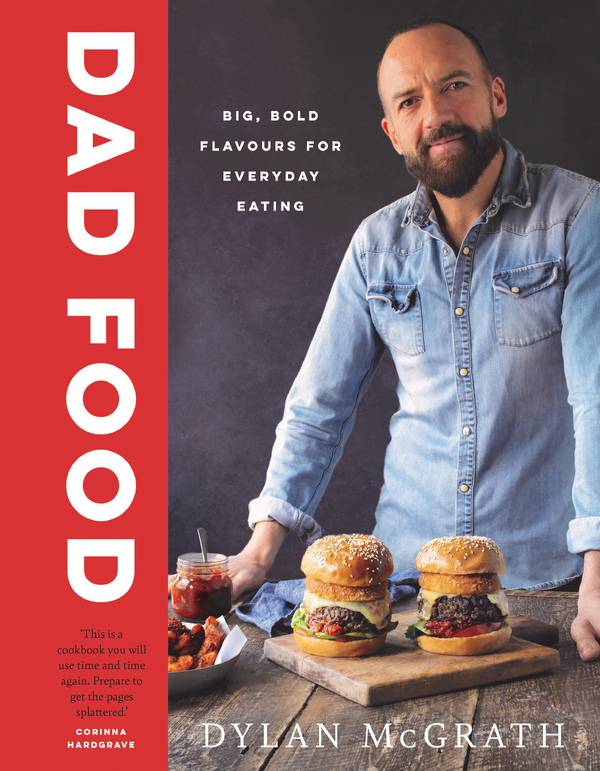 From a chef who’s behind dozens of tomes to another famous chef-restaurateur Dylan McGrath, who’s just brought out his inaugural cookbook - Dad Food (Gill Books, hardback €24.99) which also aims to banish the fear of cooking through sharing the recipes that every man should have up his sleeve. Promising ‘big bold flavours for everyday eating’ Dylan gives a masterclass in the kit and the techniques that will guarantee great results along with accessible ingredients, and foolproof recipes – including every dad’s favourite: the BBQ.
From a chef who’s behind dozens of tomes to another famous chef-restaurateur Dylan McGrath, who’s just brought out his inaugural cookbook - Dad Food (Gill Books, hardback €24.99) which also aims to banish the fear of cooking through sharing the recipes that every man should have up his sleeve. Promising ‘big bold flavours for everyday eating’ Dylan gives a masterclass in the kit and the techniques that will guarantee great results along with accessible ingredients, and foolproof recipes – including every dad’s favourite: the BBQ.
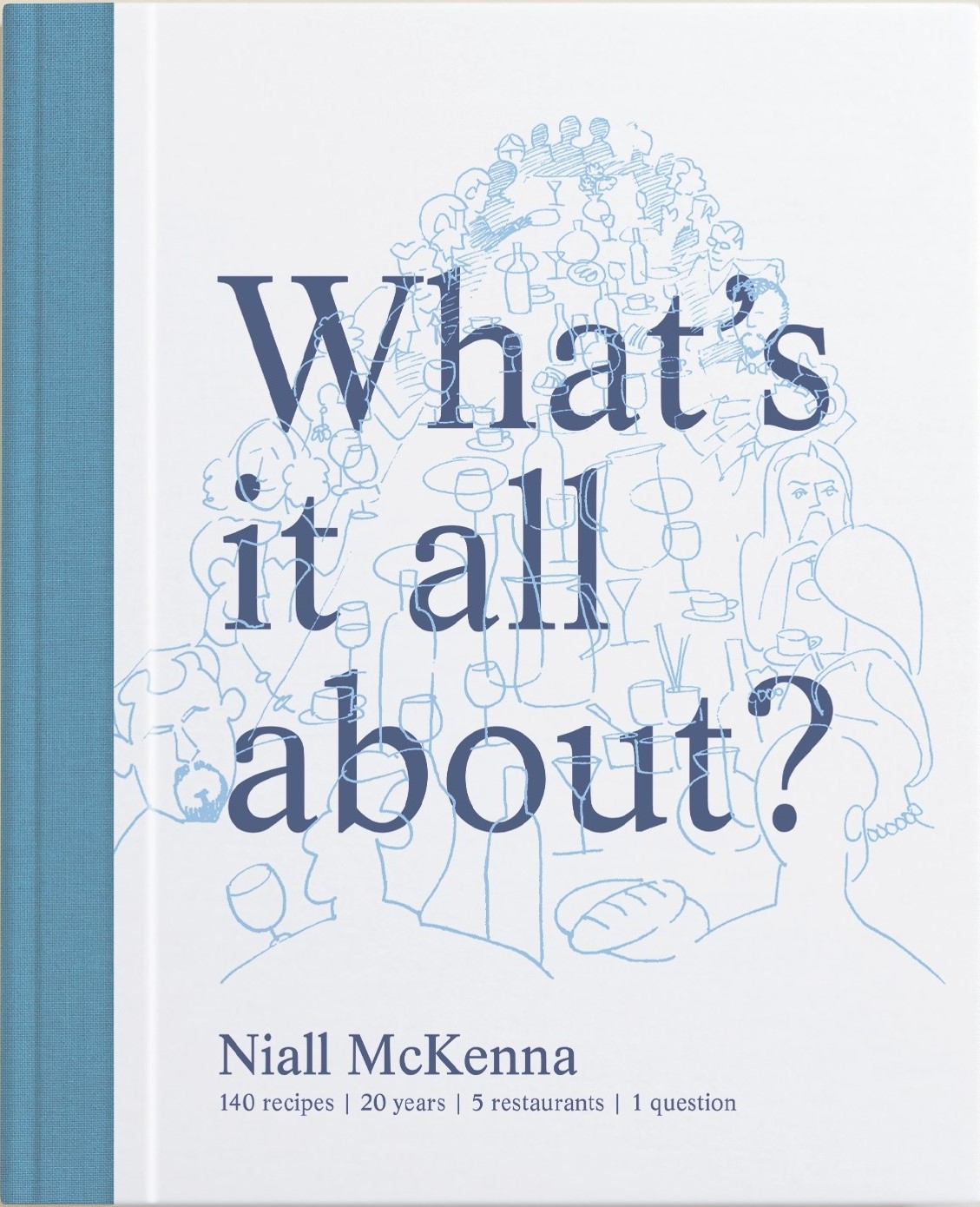 And there’s also a much-anticipated first book from Belfast legend Niall McKenna, the celebrated chef-owner of James St and Waterman House, What’s It All About? (W&G Baird hardback, £25 + p&p) Summarised as ‘140 Recipes | 20 Years | 5 Restaurants | 1 Question’ Niall sees it as love letter to Belfast, with recipes collected from the five restaurants that he and his wife Joanne have operated over the last two decades set alongside some of their artwork and iconic Belfast landmarks (see Gin-Cured Salmon recipe below). Not surprisingly, everything centres on the producers and local suppliers that Niall has showcased so warmly in the restaurants and his famous Waterman Cookery School. His friend the chef Paul Rankin, who Niall credits as being hugely influential in his career, describes Niall as ‘a shining light, always there, always cheery, always the hardest worker’, heralding the cookbook as a ‘gift to all of us who love food and hospitality’. I couldn’t have put it better myself.
And there’s also a much-anticipated first book from Belfast legend Niall McKenna, the celebrated chef-owner of James St and Waterman House, What’s It All About? (W&G Baird hardback, £25 + p&p) Summarised as ‘140 Recipes | 20 Years | 5 Restaurants | 1 Question’ Niall sees it as love letter to Belfast, with recipes collected from the five restaurants that he and his wife Joanne have operated over the last two decades set alongside some of their artwork and iconic Belfast landmarks (see Gin-Cured Salmon recipe below). Not surprisingly, everything centres on the producers and local suppliers that Niall has showcased so warmly in the restaurants and his famous Waterman Cookery School. His friend the chef Paul Rankin, who Niall credits as being hugely influential in his career, describes Niall as ‘a shining light, always there, always cheery, always the hardest worker’, heralding the cookbook as a ‘gift to all of us who love food and hospitality’. I couldn’t have put it better myself.
 And so to David and Stephen Flynn’s celebration of 20 years ‘bringing joy through good food’ in the local community and beyond,The Happy Pear 20: Recipes From the First 20 Years (Gill Books hardback €24.99) is their latest collection of versatile and comforting plant-based recipes. Inspired by the dishes that are most requested in the café and the food that they (and their kids) eat at home, their recipes all use familiar ingredient to deliver on flavour and nutrition – encouraging us all to embrace plant power with tried and tested recipes, designed to make eating more veg as easy, and tasty, as possible.
And so to David and Stephen Flynn’s celebration of 20 years ‘bringing joy through good food’ in the local community and beyond,The Happy Pear 20: Recipes From the First 20 Years (Gill Books hardback €24.99) is their latest collection of versatile and comforting plant-based recipes. Inspired by the dishes that are most requested in the café and the food that they (and their kids) eat at home, their recipes all use familiar ingredient to deliver on flavour and nutrition – encouraging us all to embrace plant power with tried and tested recipes, designed to make eating more veg as easy, and tasty, as possible.
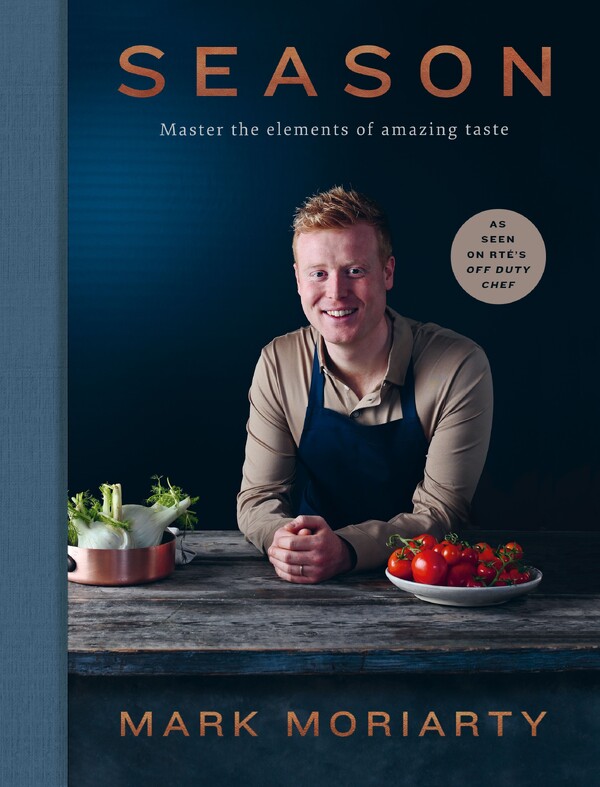 TV chef Mark Moriarty needs no introduction and his first cookbook, Flavour, was a bestseller and winner of the Cookbook of the Year at the An Post Book Awards. Now he’s back with Season (Gill Books hardback €24.99) a hundred new recipes designed to elevate everyday cooking throughout the seasons – and that includes Christmas dinner, with Mark’s brined turkey crown and honey-and-soy-glazed ham… But, subtitled ‘Master the elements of amazing taste’, Season is equally focused on passing on Mark’s chef tips on how best to use seasoning - sea salt, black pepper, butter, olive oil, lemons, tabasco, soy sauce - to get the best from every dish.
TV chef Mark Moriarty needs no introduction and his first cookbook, Flavour, was a bestseller and winner of the Cookbook of the Year at the An Post Book Awards. Now he’s back with Season (Gill Books hardback €24.99) a hundred new recipes designed to elevate everyday cooking throughout the seasons – and that includes Christmas dinner, with Mark’s brined turkey crown and honey-and-soy-glazed ham… But, subtitled ‘Master the elements of amazing taste’, Season is equally focused on passing on Mark’s chef tips on how best to use seasoning - sea salt, black pepper, butter, olive oil, lemons, tabasco, soy sauce - to get the best from every dish.
And then there are the gems from that Aladdin’s cave of cookbooks that Kristin Jensen is collecting in her rapidly expanding publishing family Nine Bean Rows and Blasta Books (the ‘little books with big voices’). New titles include The Old Spot Cookbook (a wonderful collection of recipes and more from the much-loved Dublin gastropub - see cocktails below) Graham Herterich’s Cook (a companion volume to his hugely successful Bake; see Lasagne, coleslaw & ehips recipe below) and the latest Blasta Books title SOCAFRO (see No-Churn Lemon-Lime Ice Cream recipe below). They’re available in bookshops and speciality stores, but it’s worth spending some time on the website as there’s a lot to choose from, back titles to catch up on and offers to avail of; there are discounts for multiple purchases, for example, and the new series of four Blasta Books has just been announced for 2025 – what a super Christmas present that would make, with a new book to be delivered each quarter.
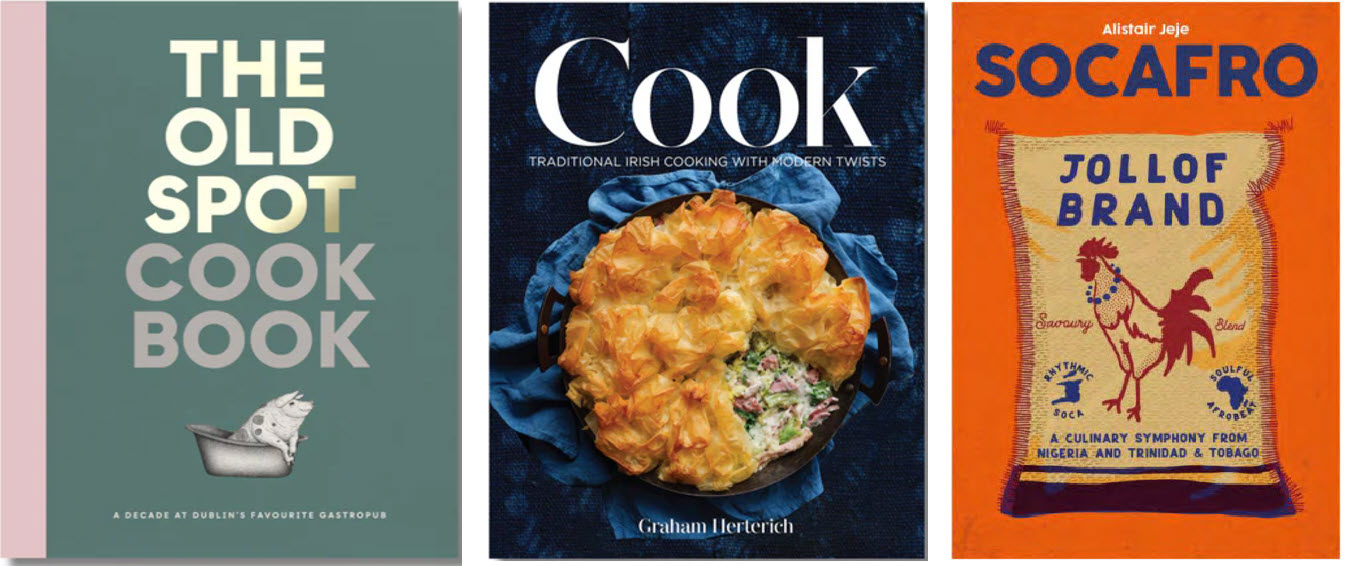
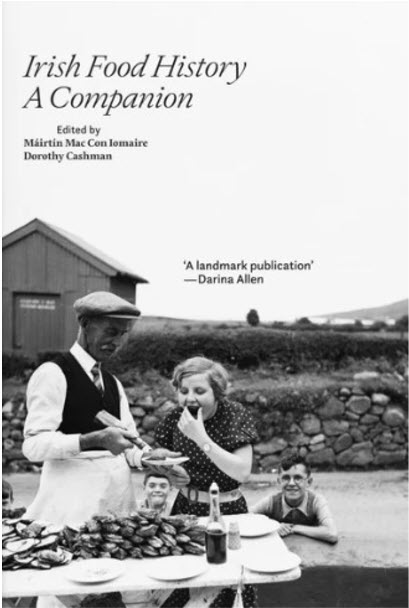 But not all food books are designed around recipes, and some of the best are notable for being a great read. Take Máirtín Mac Con Iomaire and Dorothy Cashman’s Irish Food History: A Companion (Royal Irish Academy, hardback €45; https://www.books.ie/) for example. With a foreword from Professor James Kelly and thirty-two different expert contributors, it ‘offers you the chance to explore the rich tapestry of Ireland’s history with food in these twenty-eight urgent and compelling chapters – and brings the reader on a gastronomic odyssey from earliest times and the start of the hunter-gatherer community, all the way to the abundant world of modern Irish cooking, safe in the hands of the world’s most highly regarded food historians’. Now wouldn’t that be something to ease the most jaded of revellers through the Christmas…
But not all food books are designed around recipes, and some of the best are notable for being a great read. Take Máirtín Mac Con Iomaire and Dorothy Cashman’s Irish Food History: A Companion (Royal Irish Academy, hardback €45; https://www.books.ie/) for example. With a foreword from Professor James Kelly and thirty-two different expert contributors, it ‘offers you the chance to explore the rich tapestry of Ireland’s history with food in these twenty-eight urgent and compelling chapters – and brings the reader on a gastronomic odyssey from earliest times and the start of the hunter-gatherer community, all the way to the abundant world of modern Irish cooking, safe in the hands of the world’s most highly regarded food historians’. Now wouldn’t that be something to ease the most jaded of revellers through the Christmas…
 In a similar vein the latest book from Galway chef, restaurateur, author, playwright, educator and visionary, Jp McMahon, An Irish Food Story: 100 Foods That Made Us www.aniarrestaurant.ie and www.ninebeanrows.com aims to answer that thorny old question ‘What is Irish food?’ With his decades of practical experience and several Irish food books already under his belt – including The Irish Cookbook (2020) and An Alphabet of Aniar: Notes for a New Irish Cuisine (2023) – Jp is very well qualified to provide answers, which he does by “chronicling the evolution of our tastes and culinary desires, from the first settlers who arrived on the island 10,000 years ago, to the people who call Ireland home today…” There’s plenty of food for thought between these covers when it come to our food culture, and it will give those of us old enough to remember some of the relatively recent absurdities seen in Irish shops and on our tables plenty of chuckles along the way too.
In a similar vein the latest book from Galway chef, restaurateur, author, playwright, educator and visionary, Jp McMahon, An Irish Food Story: 100 Foods That Made Us www.aniarrestaurant.ie and www.ninebeanrows.com aims to answer that thorny old question ‘What is Irish food?’ With his decades of practical experience and several Irish food books already under his belt – including The Irish Cookbook (2020) and An Alphabet of Aniar: Notes for a New Irish Cuisine (2023) – Jp is very well qualified to provide answers, which he does by “chronicling the evolution of our tastes and culinary desires, from the first settlers who arrived on the island 10,000 years ago, to the people who call Ireland home today…” There’s plenty of food for thought between these covers when it come to our food culture, and it will give those of us old enough to remember some of the relatively recent absurdities seen in Irish shops and on our tables plenty of chuckles along the way too.
And let us not forget a couple of super books reviewed earlier in the year – Ali Dunworth’s entertaining A Compendium of Irish Pints, The Culture, Customs and Craic makes the perfect stocking filler / gift under €20, and, for children, Michelle Darmody’s Seed to Supper would be hard to beat.
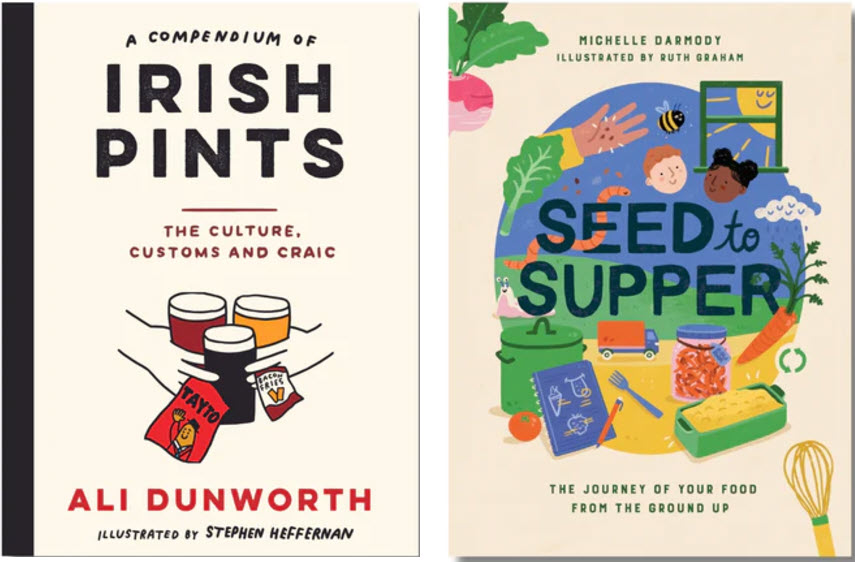
SHOPPING: your local bookshop is the best first stop (and there is nowhere better to browse) but if inconvenient, or when shopping from abroad, these are among the best major booksellers:
Gill Books https://www.gillbooks.ie/food-drink
Dubray Books https://www.dubraybooks.ie/category/food-and-drink
Stores Dublin (9), Wicklow (Bray) Cork, Waterford, Galway
Easons – online https://www.easons.com/Books & store locator map https://www.easons.com/about/stores
Hodges Figgis, Dawson St Dublin and online https://www.hodgesfiggis.ie/
SOME RECIPES TO TRY, which might come in very handy over the festive season…
 THE OLD SPOT COOKBOOK
THE OLD SPOT COOKBOOK
If you’d like to make our signature cocktail ‘The Old Spot’ at home, simply muddle some fresh blood orange into your gin of choice. If you love it (you will) and would like to make lots more of these (we do), then you could infuse your own blood orange gin (details given in book) or pick up one of the many brands that sell it. The apple and rosemary notes make this a great match with our Andarl Farm free range pork chops with cider jus (recipe in book).
Makes 1
2 slices of blood orange
25ml gin
25ml lychee liqueur
40ml apple juice
25ml lime juice
15ml rosemary sugar syrup
ice cubes, for shaking and serving
To Garnish:
crushed ice
1 sprig of fresh rosemary
1 fresh or dehydrated lime wheel
a small straw
To make the rosemary sugar syrup: dissolve 200g granulated or caster sugar 200ml in hot water and add a few sprigs of rosemary; cool, cover & refrigerate 24 hrs to infuse. If not using within 1 week, strain into a sterilised bottle.)
1 In the base of a cocktail shaker, muddle the slices of blood orange with the
gin. (If you’re using a blood orange-infused gin, then skip the muddling
step and simply add the flavoured gin in the next step.)
2 Add the lychee liqueur, apple and lime juice and sugar syrup to the shaker,
shake well over ice and strain into a tumbler over ice, then top up with
crushed ice.
3 Garnish with fresh rosemary, a wheel of lime and a small straw.
The Green Door
This is the cocktail that got The Old Spot shortlisted for the Best Cocktail Experience
at the Irish Restaurant Awards 2022. It makes a gorgeous pairing with our
bluefin tuna starter (recipe in book).
Makes 1
2 slices of cucumber
½ thumb-sized piece of fresh ginger, sliced
25ml sugar syrup (as above, without the rosemary)
40ml Method & Madness gin
25ml lemon juice
20ml Martini dry vermouth
ice cubes, for shaking
To Garnish: 1 strip of fresh cucumber, freshly ground black pepper
1 For the fresh cucumber strip, peel a full length of cucumber all the way
down, roll it into a spiral and spear with a cocktail stick to keep it in place.
2 Grind some black pepper onto a saucer and dip the rim or side of a chilled
coupe glass into the pepper to garnish (or you can simply sprinkle the
finished cocktail with black pepper before serving).
3 In the base of a cocktail shaker, muddle the slices of cucumber and ginger
with the sugar syrup.
4 Add the gin, lemon juice and vermouth, shake well over ice and strain into
a chilled coupe glass.
5 Lean the rolled cucumber inside the glass to serve.
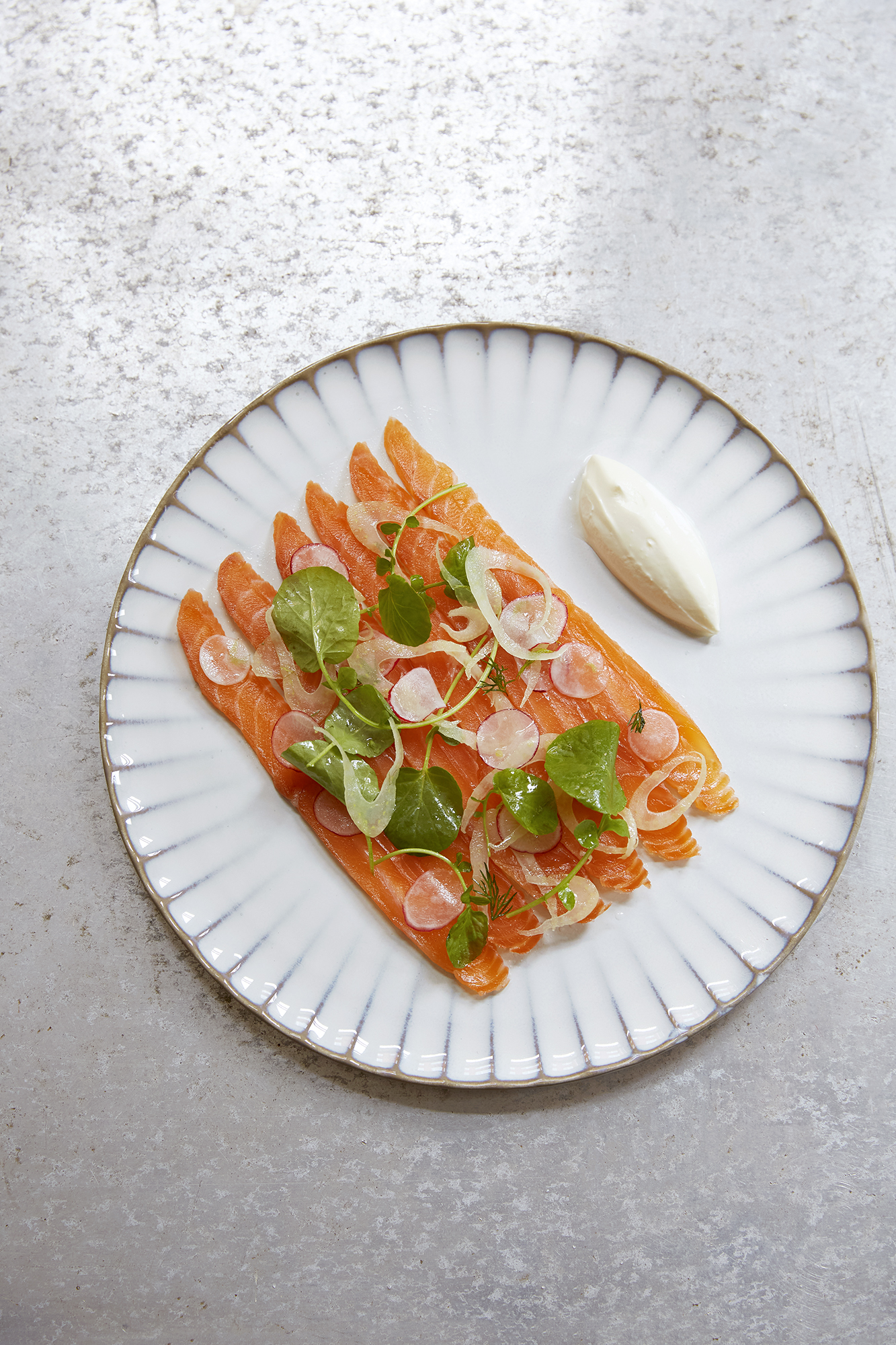 WHAT’S IT ALL ABOUT? BY NIALL MCKENNA
WHAT’S IT ALL ABOUT? BY NIALL MCKENNA
Gin-Cured Salmon
From This is served in James Street South and Waterman.
When I make this recipe, I cure a whole side of salmon; I know it seems like a lot, but it will keep in the fridge for up to 10 days. Belfast gins, Shortcross and Jawbox are my favourites, and either will work well for this curing process.
Serves 8-10
Ingredients
1 x 500g side of salmon trimmed, skinned with bloodline removed
75g sea salt
100g caster sugar
The zest of 1/2 lime
75ml gin
For the pickled vegetables
10 breakfast radishes
4 medium banana shallots
100ml pickling liquor (see below)
To serve: 100g cre?me fraiche
Method
Loosely line a deep baking tray with a large piece of cling film. The tray must be able to fit into the fridge.
Place the salmon onto the cling film, sprinkle with salt, sugar, and lime zest and drizzle with gin. Wrap the salmon tightly in the cling film to create a parcel, ensuring the gin won’t escape during curing. Place the salmon in the fridge for 24 hours and turn the parcel twice so the salmon cures evenly.
Use a Japanese mandolin to thinly slice the radishes and shallots for the pickled vegetables. Place into a container and pour over the pickling liquor. Cover with a lid and refrigerate for 2–3 hours.
To serve, unwrap the salmon, remove the cure with a brush and pat dry; slice the salmon thinly, arrange it onto plates and serve with pickled vegetables and a quenelle of creme fraiche.
*To make the pickling liquor: Bring to the boil in a pot: 250ml each white wine and water, 180g sugar, 2 each of bay leaves, star anise and peeled garlic cloves, 1 tsp table salt, 1 small red chilli (de-seeded & finely sliced), 4 black peppercorns and 1 whole clove. Boil 2-3 minutes until sugar dissolves. Cool. Pour into a sterile jar & store in the fridge.
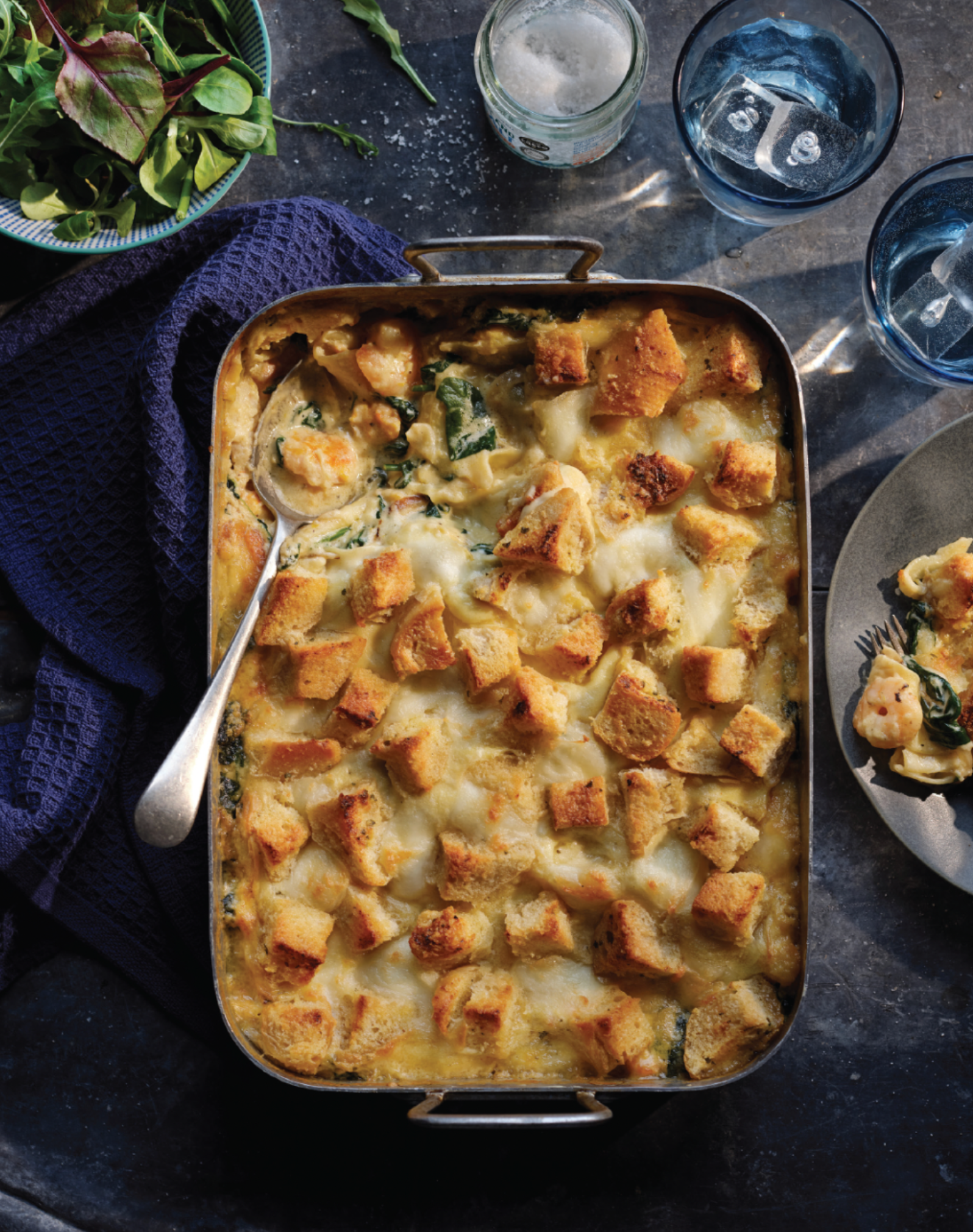 COOK BY GRAHAM HERTERICH
COOK BY GRAHAM HERTERICH
Lasagne, coleslaw & chips
In the inaugural issue of Scoop magazine, my friend Marcus O'Laoire described lasagne, coleslaw and chips as an Irish holy trinity of food and I completely agree. I really don't think we could have made this Italian classic any more Irish than by turning it into a double carb hit with a side of cabbage. I have made so many lasagnes over the years - first when helping Mum when she had her catering business and then in my work as a chef - then truth be told, I went off it for a long time. But my love for this combination is well and truly back.
Serves 4
20cm square baking dish
6-9 dried lasagna sheets
75g grated cheese (eg Cheddar & mozzarella)
For the beef ragu:
2 tbsp vegetable oil
1 medium onion, finely diced
125g bacon lardons
4 garlic cloves, finely chopped
500g beef mince
2 carrots, finely diced
2 celery sticks, finely diced
glass of red wine (optional)
tbsp tomato puree
1 x 400g tin of chopped tomatoes
2 bay leaves
1 tsp dried oregano
salt and freshly ground black pepper
To make the beef ragu, heat the oil in a large frying pan over a medium heat. Add the onion and cook for 8 minutes, stirring occasionally, until softened, then add the bacon lardons and cook for another 5 minutes. Add the garlic and cook for 2 minutes more.
Turn up the heat and add the beef mince. Break it up with a spoon but don't overmix or break it up too much - try to keep some texture. Allow it to get some colour before stirring it to brown all over. This will take 8-10 minutes.
Add the carrots and celery and cook for 2 minutes, then pour in the red wine (if using) and let it evaporate completely. Add the tomato puree and cook for another 2 minutes.
Stir in the tin of chopped tomatoes, then half-fill the tin with water, swirl it around to catch all the remaining tomato stuck to the sides and add it to the pan. Add the bay leaves and oregano and season with salt and pepper. Bring to a boil, then reduce the heat and simmer gently for 45 minutes, adding a dash of water if it starts to look too dry.
While the ragu simmers, make a cheese sauce: Melt 75g butter in a heavy-based pan, cook 75g flour in it for 1 minute, stirring. Whisk in about 250ml milk, cook for 2 minutes and add 500ml milk (total 750ml). Stirring occasionally, simmer 5-8 minutes until nicely thickened. Stir in 150g grated cheese and 1½ tsp mustard for the last 2 minutes. Remove from the heat.
Preheat the oven to 180°C fan.
Grease a 20cm square baking dish and spread one quarter of the cheese sauce over the base, top with 2-3 lasagne sheets and then half of the beef ragu, followed by one quarter of the cheese sauce and another layer of pasta sheets. Layer again with the remaining beef ragu, another quarter of the cheese sauce and the rest of the pasta sheets lasagna sheets. Finally, top with the rest of the cheese sauce and scatter the grated cheese on top,
Cook in the preheated oven for 40-45 minutes, or until golden brown and cooked through. Leave to stand for about 10 minutes before cutting into slices and serving with chips and coleslaw.
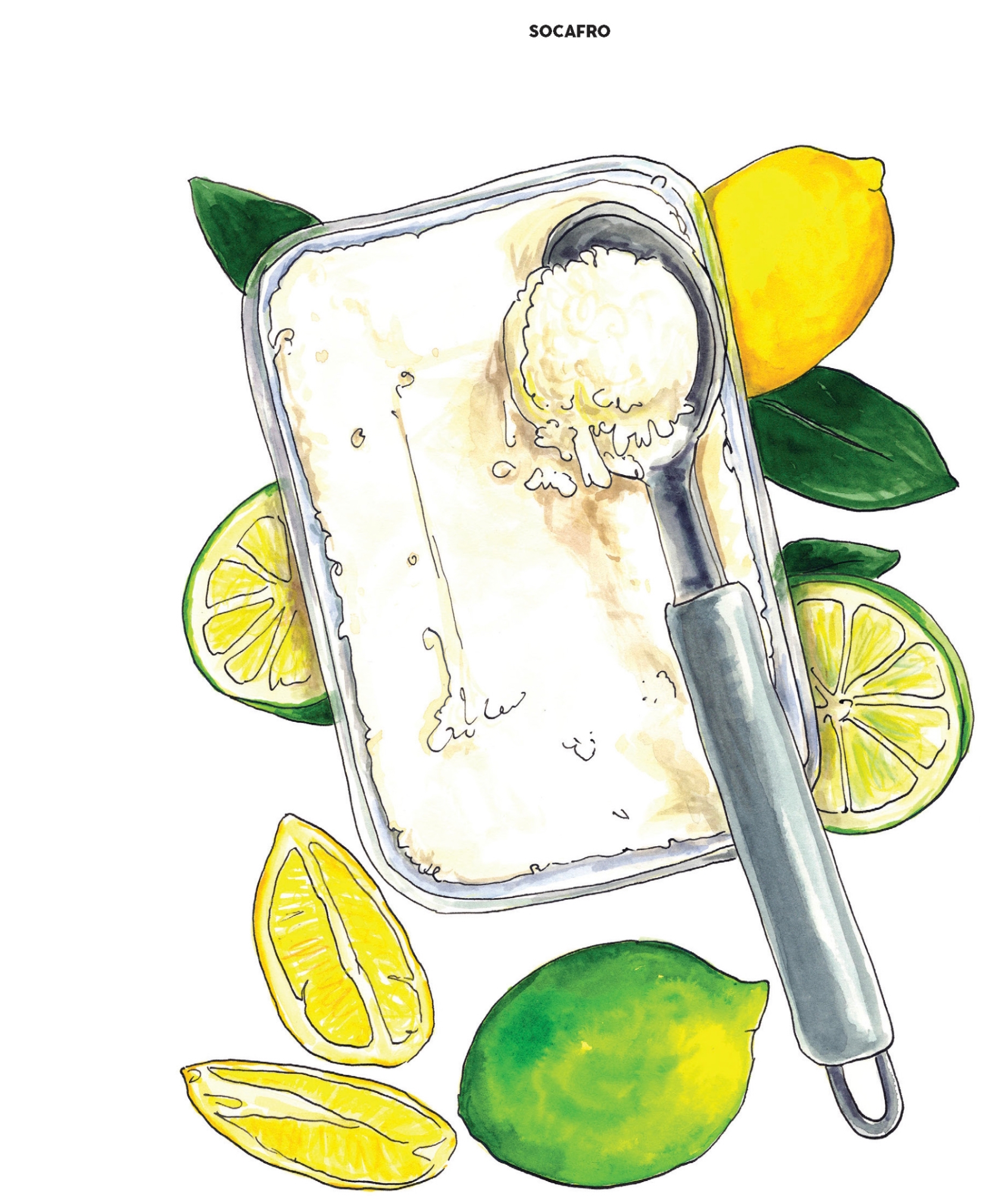 SOCAFRO NO-CHURN LEMON-LIME ICE CREAM
SOCAFRO NO-CHURN LEMON-LIME ICE CREAM
All these ingredients - lemons, limes, condensed milk, Angostura bitters - are things we use in a lot of our drinks in the Caribbean, so I wanted to see how they worked together in an ice cream. And let me tell you, they work great! It's sweet, it's sharp, it's sour - very refreshing and perfect for summer. You don't even need an ice cream maker for this and it still turns out smooth and creamy because of the condensed milk. It's a no-churn no-brainer.
Makes 1 litre
2 lemons quartered
2 limes quartered
500ml water
2 x 400g tins of condensed milk
500ml double cream
3 dashes of Angostura bitters
1 tsp ground nutmeg
a handful of ice
Put the lemons, limes and water into a high-speed food processor and blitz them, skins and all, until smooth. Pour into a jug through a fine mesh sieve to strain out the solids.
Put the strained lemon-lime mixture back in the blender food processor with the rest of the ingredients and blend again until creamy and smooth.
Pour into a 1-litre airtight freezer-proof container and cover.
Freeze overnight- it will be softly frozen, not rock hard.






There are currently no comments
Leave a comment
Not a member? Register for your free membership now!
Or leave a comment by logging in with: